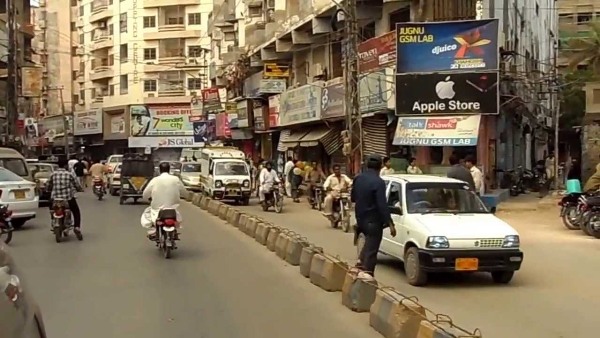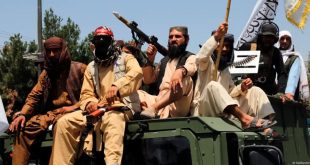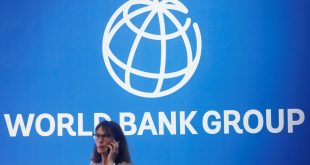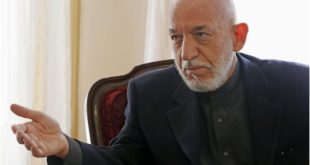By Zulfiqar Shah-Sindhi and Baloch today have transformed into modern social and cohesive entities, as they were historically however the linguistic, ethnic and sub-cultural additions that were resulted by the Partition of British India, (after the creation of Pakistan) initiated the process of integration in the societies. Politics is patchy social process, imbibed with the power; therefore state apparatus of Pakistan, like elsewhere in the world today, has particularly determined the social interdependence among and between the indigenous-aboriginal Sindhi and Baloch as well as the migrants, refugees, and immigrants durring 1947 -2017.
Nationhood, nationality, and identity today are diversified, as well as simple matters. This can only be described, determined, categorized and awarded on the grounds of aboriginality, indegenioushood, ethnicity, linguistics, ethnology particularly in contemporary world of post-immigration and migration issues, United Nations instruments, comprehensive laws and procedures practiced in the nation-states and federations across the globe.
In Sindh, Kolhi, Bhil, Meghwar, Rebari, Gurgla and Brahvi are the aboriginal Dravidians and Proto-Dravidians; and Sammat specifically and rest of original Sindhi are indigenous. Samaat includes some Arians and Brahman Hindus as well as various lineages of Rajputs, the communities associated with Indus and died River Sarswati, lakes and waters bodies, cost and islands. Non-samaat indigenous Sindhi include ethnic and / or linguistic Balochi who claims Sindhi identity are indigenous Sindhi that includes indigenous Siraki subculture of Sindhi as well. This also includes those who settled in Sindh over one century. Indigenous and aboriginal Sindhi is majority in Sindh.
Indigenous Sindhi, who earlier were living in the 1700s borders of Sindh, and later on moved in the contemporary and Britain borders of Sindh, for examples Kutchi, and some other Zaats (caste) are aboriginal or indigenous Sindhi. Indigenous Baloch of Karachi who claim Baloch identity are also indigenous Baloch of Sindh. Baloch that have migrated to Sindh from 1890 to 1945 are submerged in Sindhi society, and cannot be thought of being non-indigenous. Thus, by every mean they are considered indigenous and original Sindhi with their elders’ Baloch identity. Punjabi who migrated to Sindh after the commissioning of Sukkur, Guddu and Kotri Barrages (Ghulam Mohammad Barrage) have assimilated in Sindh, therefore they are Sindhi and can be said Sindhi of Punjabi origin. Some amongst them are still holding Punjabi sub-culture, especially those who migrated after commissioning of Kotri Barrage and Guddu Barrage; however their large majority has submerged linguistically with Sindhi. A smaller numbers of Rajasthani and Gujarati in various districts on the western bank of Indus as well as in the cities of Karachi, Hyderabad, Thatta, and southern parts of district Jamshoro that includes Memon of Okhai and Kutyana background, Silawat, and other Zaats are also Sindhi, and using either various dialects of Sindhi or a blend of Sindhi-Rajasthani or Sindhi-Gujarati. Most of them, like Memon, are from within the historical borders of Sindh. Smaller groups like Silawat who settled in Sindh on the invitation of Pir Pagar Surihya Badshah in 1900s, and others who either have migrated before partition of India from various cultures and lands of Southasia, or during the Britain India, have not only assimilated in Sindh and with Sindhihood, but also have been protecting and defending Sindh. It is general unwritten rule of Sindhi that indigenous and migrant Baloch are Sindhi in Sindh.
Sindhi at the border with Rajasthan and Gujarat state of India speak Sindhi, Dhatiki, Marwari, and Parkari. Sindhi in Rajasthan, India particularly Barmer and Jaisalmir districts, speak Sindhi, Dhatki and Marwari. On the both side of the borders, people are indigenous in overwhelming majority. Meanwhile, districts of Kutch and Bhuj in Gujarat, India are ethno-linguistically Kutchhi Sindhi Muslims and are indigenous majority in the districts. Rest of Sindhi dictions and their spoken centers are Laari Lasi in Karachi; Laari and Laari Lasi Thatta; Laari in Badin; Mirpurkhas; Tando Allahyar, and Tando Mohammand Khan Districts. Although Laari, but called literary Sindhi, is spoken in Hyderabad, and adjoining Jamshoror and Kori towns and villages, as well as in Matyari districts. Lari Lasi is also spoken between river Indus to the borders with Balochistan downward Jamshoro and Kotri towns of district Jamshoro, and Jhirik of district Thatta. Wicholi, which has no popular name, is spoken in Nawabshah, Dadu, northen Jamshoro and Naushehro Feroz. Utaradi, is spoken in Khairpur, Larkana, Sukkur, Ghotki, Kashmore, Jaccobabad and Qambar-Shahdadkot districts of Sindh. Siraiki, is not an alien language of Sindh. Sindhi rulers during first half of 1800s were Sindhi of Siraiki dialect. They ruled Sindhi until invasion of Sindh in 1843.
Linguistically Siraiki is diction of Sindhi, its name is acquired from Sindhi word Siro, which means ‘the fringe’ in Sindhi. Siraiki means language that is spoken at the fringes of Sindh in north. Multan has once remained capital of the Kingdom of Sindh. The ethnic composition of Siraki people is like Sindhi and Baloch, a blend of ethnic Baloch, Sindhi of Samat (indigenous) and Dravidian (aboriginal) origin. They form ethno-linguistically half of population in Punjab
The offspring of Indian Partition refugees are sons and daughters of the soil and are Urdu speaking, Bihari (Bhaujpuri mostly), and Qaimkhani (Rajasthani) Sindhi. The process of their integration with indigenous Sindhi majority is underway in Sindh, albeit very slow paced in terms of sociological inter-weaving.
In some cases, those ethnically or linguistically non-Sindhi, have migrated towards Sindh since 1990, and have become permanent residents of Sindh, have no intention to return to their ancestral lands, and have associated their interests and commitments with Sindh in terms of its sovereignty and security in all of its manifestations, can be said and claimed as Sindhi. However, as rule of thumb, and in the light of United Nations instruments, the offspring of migrants are also Sindhi. It is an unwritten and consensual sentiment and expression of Sindhi that those who does not pour their commitment with the sovereignty, security and interest of Sindh, can never be accepted as Sindhi.
In Balochistan, Baloch of Balochi group of languages that include Proto-Dravidian Brahvi; various versions, dialects and expressions of Balochi spoken in the cultural-topographical areas of Sarawan, Jhalwan, Makaran, and Sindhi (Lasi and Utradi) are the indigenous and aboriginal Baloch.
Aboriginal as well as indigenous Sindhi including Lasi Lari Sindhi, Utradi and other smaller variant linguistic groups of Balochi including Brahvi are mostly dwelling at the borders with Sindh, Iran and Afghanistan, and Siraki areas of Punjab. This also includes those who are living in Afghanistan (Helmand province) and Iran (Sistan-Balochistan province) and speak Balochi and Sindhi.
Pashtun are aboriginal and indigenous in Balochistan. There are refugees and migrant (from Afghanistan) Pashto speaking Balochistani. Previously known as British Balochistan, the Pashtun area of Balochistan is similar to Balochi. Almost similar in patterns, tribal construct and principles. The historical affinity between Baloch and Pashtun has many examples like the one, marriage of a Khan of Kalat from the family of Prince in Kandahar, who gifted Quetta to her daughter as Shaal (a cultural gift). Pashto speaking areas of Balochistan include the Afghanistan-Pakhtukhuwa-FATA bordering tribal, the high rise mountainous, and valley areas. Pashto in Balochistan is linguistically associated with southern Afghanistan Pashto with its own peculiarities, and dialectical waves amongst bordering tribal and valley Pashtun. Pashtun refugee influx during the Cold War from southeastern Afghanistan particularly from the area that falls between Qandahar to Zabul has been witnessed in the districts adjoining to Quetta.
Baloch and Pashtun share historically, culturally and linguistically one common city, Quetta, where Pashtun are aboriginal, and linguistic Brahvi and Balochi Baloch are indigenous. Khuzdar, the second largest city of Balochistan, is Baloch of linguistic Brahvi and Balochi residents.
During 1970s and later on, the anarchy in Afghanistan mainly became reason to larger migration of Persian speaking Hazara from central Afghanistan. Hazara, historically, are ethnic Mongolian. They almost are limited to Quetta city with a smaller number of populations in comparison with Pashtun and Baloch in Quetta. The settlement patterns of Pashtun, Baloch and Hazara are similar to certain extent; however the development and urbanization in Quetta, although slow paced, has changed the ethnic patterns of settlements. Unlike the Pashtun residents of city, the oldest one, and the Pashtun and Brahvi settlers in the rural orchards of the urban Quetta are now urbanized Baloch parts of the city. The returnee of Balochistan liberation war during 1980s mostly from Helmand, who returned with the comeback of Nawab Khair Bux Murri, their tribal and political leader, are settled in the worst living condition outside Quetta on the sides of Ring Road. No displacement support has been tendered to them, over one decade, either from Government of Balochistan, Quetta Municipality, and the UNHCR. They live in the temporary hamlets.
The understanding, historically between the people from Sindh and Balochistan, and officially between Governments of Sindh and Balochistan is that the rainfall on the bordering mountains, if and where it drains towards Balochistan is the area of Balochistan, and if and where it drains to Sindh is the area of Sindh.
Sindhi speaking Baloch resides in Lasbella district where they are known as Lasi, and the language is called Lasi or Lasi Lari. Baloch of historical Magus Area, called Jhil Magsi, mostly speak a Sindhi blended with Balochi or Balochi blended with Sindhi. Baloch of Dera Allahyar, Dera Murad Jamali, Sibi and Bolan speak Balochi as well as Sindhi. Similar patterns are also found to certain extent in the various pockets of Khuzdar and Kalat. Brahvi are Balochi Dravidians, who live in Balochistan and Sindh indigenously. Linguistically Brahvi and Sindhi until shared around 30 percent vocabulary at least. Brahvi and Tamil language also share phonetics and considerable vocabulary. Various dialects of Balochi are spoken in the cultural-topographical areas of Balochistan, and have a better linguistic connectivity with Persian at the Iran borders particularly in southeastern Balochistan. Baloch of Helmand, Afghanistan are Balochi speaking, while Baloch of Sistan-Balochistan, Iran and adjoining areas speak Sindhi blended with Persian influenced Balochi, and Iranian Balochi. Jadgal (linguistically non Baloch but ethnically Baloch) form majority in Sistan-Balochistan in Iran. They are recognized Baloch in Iran and in Balochistan.
Shah is a Sindhi refugee journalist, analyst and activist currently staying in Delhi. www.zulfiqarshah.com
 Afghanistan Times
Afghanistan Times




